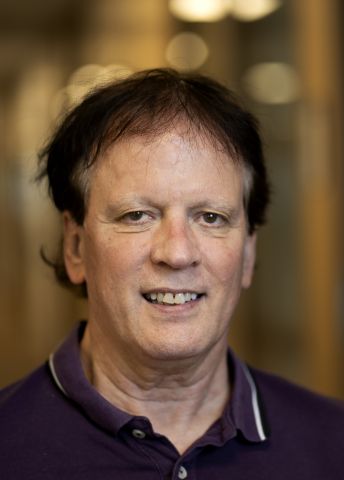
Andrew Ewing
Professor of Analytical Chemistry
Wallenberg Scholar
Institution:
University of Gothenburg
Research field:
Analytical chemistry


Wallenberg Scholar
Institution:
University of Gothenburg
Research field:
Analytical chemistry
Our brains are a constant hive of activity in the form of chemical exchanges and interactions, both within and between cells. Ewing, who is a professor of analytical chemistry at the University of Gothenburg, has spent much of his long research career working to understand the basis for this complex communication between brain cells.
Over the years he has received widespread recognition for a number of findings, including how our vesicles – tiny packages that deliver information between cells – release their chemical contents when a signal arrives at the end of a cell.
As a Wallenberg Scholar, Ewing is now taking the next step in building our knowledge of the brain’s communication pathways. Over the next few years he will be taking a closer look at the inner workings of brain cells to learn more about the mechanisms behind the brain’s amazing capacity for change. Our brains are plastic, which means they have a unique ability to adapt, change and learn new things.
The Wallenberg Foundation funding is hugely important for Swedish research. The grant I have received has given me many opportunities. Among other things, I’ve been able to recruit really skilled people.
Ewing’s research team will be focusing on the interactions between organelles, which can be seen as the cells’ own organs or “workstations,” The researchers’ hypothesis is that the chemical interaction between organelles plays a major part in the brain’s plasticity. They intend to examine this further in a groundbreaking study.
“As far as we know, this is the first time anyone has studied this interplay between organelles. Very little is known about this chemical interaction and the part it plays in brain plasticity. This is mainly because the analytical methods needed to perform studies of this kind are not yet in place,” Ewing explains.
But the absence of suitable methods presents no obstacle to Ewing’s team, which is planning to develop new technology and new tools to examine the cells’ very smallest components. Over the years the team has developed extensive expertise in multiple fields within analytical chemistry, including stimulated emission depletion (STED) microscopy*, a form of super-resolution microscopy, one of the methods to be used in the new study.
This technique enables the scientists to obtain ultrahigh-resolution images of the interior of the cells. They will be examining particles with a diameter of 40 nanometers – 40 billionths of a meter – about one thousand times less than a human hair.
“We will design a method enabling us to see and measure, at incredibly small scales, processes taking place in individual organelles in the brain. This will enable us to see when the organelles transfer molecules to each other after we have stimulated the brain in various ways. This knowledge may help us to understand what happens in the cell when we create memories and learn new things,” Ewing explains, and goes on:
“The goal is to create a completely new model for how brain cells communicate, a model that also explains how interaction between organelles impacts brain plasticity.”
Ewing points out that knowledge about learning and memory is fundamental to understanding many diseases, particularly neurodegenerative ones that break down neurons in the nervous system. He hopes this research will add to knowledge in the field of neuroscience and create new medical potential.
“Learning more about neural processes offers potential for being able to control them, thereby inhibiting or treating various diseases,” he says.
Ewing was by no means certain he would go into research. As a young man he worked as a veterinary assistant, and was also a skilled motor mechanic. But he was drawn to chemistry when he realized how interesting it was and that it was something he was good at.
“Chemistry and physics can explain, and are central to, virtually everything around us. And this is exactly what research is about – changing and improving our world,” he says.
Ewing’s ex-wife is Swedish, and after a number of years traveling back and forth between the U.S. and Sweden, he moved to Sweden to take up a research scholarship. He points out that the academic world in Sweden is different in many ways. In particular, he finds that the research environment has a truly international character.
“I really enjoy working with people from all around the world. At one point our team boasted 13 nationalities,” he says.
Alongside the enjoyment and excitement of making new research discoveries, a key driver for his research is the opportunity as team leader to help his fellow researchers develop. And although Ewing enjoys academic meetings and conferences, he appreciates informal discussions even more.
“I especially remember going to a barbecue that had been arranged after a research conference. There was a great atmosphere – all the researchers mingled and talked to each other about research in a really open and laid-back way. I have fond memories of that day,” says Ewing.
Text Ulrika Ernström
Translation Maxwell Arding
Photo Johan Wingborg
The methods and tools used by Ewing in his research:
Electrochemistry
Electrochemical analysis is a group of techniques that use electrical potential of an electrode to analyze the concentration of chemicals in a solution.
Mass spectrometry
A method of separating molecules from each other in order to analyze their mass and charge.
STED microscope
A super-resolution microscope that enables scientists to monitor processes inside cells at an ultrahigh resolution.